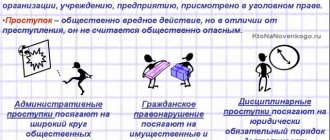Murder is classified as a particularly serious crime. Human life is recognized in modern society as the highest value and is protected by current legislation. The Constitution of the Russian Federation prohibits taking the lives of even the most dangerous criminals, which is why the highest penalty is life imprisonment.
When choosing a preventive measure for murder, qualifying criteria are taken into account. We are talking about the circumstances of the commission of criminal acts, which determine the severity of the crime. A special category of crimes includes murder committed in a generally dangerous manner.
general information
The most dangerous type of crime directed against human life is murder. When the perpetrator uses a method of killing the victim that puts the lives of other citizens in danger, the reaction of society will be more aggravated. A generally dangerous method of committing a murder is considered as an aggravating circumstance.
Features of the crime
A method is considered generally dangerous when its implementation creates the likelihood of causing harm to the health or life of people who are not participating in the conflict, that is, who are not potential victims.
It is possible to conclude that the perpetrator used exactly this method if the following was committed:
- an act of terrorist nature;
- arson or explosion where many people have gathered;
- small arms or firearms were used;
- substances with poisonous properties were used (when they were added to water or distributed through the air);
- the vehicle was mined or used for ramming, etc.
We can conclude that when using a weapon that has an individual lesion, such as a knife, etc. does not provide grounds for qualifying the act as murder in a generally dangerous manner, even if a person was deprived of life in a crowded place. An explosion carried out in a vacant lot is considered using the same principle.
Important! A person who commits murder in this manner must be fully aware that the result of his act may be the death of several people.
In addition, a psychological and psychiatric examination is carried out in relation to the perpetrator, aimed at establishing deviations in the mental health of the accused.
Objective signs of a crime
A murder that is committed in a generally dangerous manner is qualified under paragraph “e” of Part 2 of Article 105 of the Criminal Code of Russia.
In this case, the method chosen by the perpetrator must threaten the life of at least one person, in addition to the potential victim. The threat must be real. When deciding on qualifications, it is necessary to pay great attention to the situation in which the crime was committed. As already mentioned above, an explosion in a deserted place cannot indicate a generally dangerous method, since there is no real threat to the lives of other people.
In a situation where, as a result of using the method in question, several people are deprived of their lives, the act is qualified under the combination of paragraphs “a” and “e” of Part 2 of Article 105 of the Criminal Code of the Russian Federation. If harm is caused to the health of other people, then the qualification will consist of paragraph “e” of Part 2 of Article 105 of the Criminal Code and articles providing for liability for the occurrence of the described consequences, taking into account the degree of severity.
Download for viewing and printing:
Article 105 of the Criminal Code of the Russian Federation “Murder”
MURDER COMMITTED IN A GENERALLY DANGEROUS METHOD
(clause “e”, part 2, article 105)
9. A generally dangerous method of murder (clause “e” of Part 2 of Article 105 of the Criminal Code of the Russian Federation) should be understood as a method of intentionally causing death, which the perpetrator knows to pose a danger to the life of not only the victim, but at least one other person (for example, by explosion, arson, firing shots in crowded places, poisoning water and food that other people besides the victim use).
If, as a result of the generally dangerous method of murder used by the perpetrator, the death of not only a certain person, but also other persons, occurred, the act must be qualified, in addition to paragraph “e” of Part 2 of Art. 105 of the Criminal Code of the Russian Federation, under paragraph “a”, part 2 of Art. 105 of the Criminal Code of the Russian Federation, and in case of harm to health to other persons - under paragraph “e” of Part 2 of Art. 105 of the Criminal Code of the Russian Federation and under articles of the Criminal Code of the Russian Federation providing for liability for intentional infliction of harm to health.
In cases where murder by explosion, arson or other generally dangerous method is associated with the destruction or damage of someone else’s property or with the destruction or damage of forests, as well as plantings not included in the forest fund, the act committed, along with paragraph “e” of Part 2 Art. 105 of the Criminal Code of the Russian Federation, should also be qualified under Part 2 of Art. 167 or part 3 or part 4 of Art. 261 of the Criminal Code of the Russian Federation.
The generally dangerous way is:
1) Such a method, which in itself is capable of causing death to 2+ victims (explosion, shot from a cannon or shotgun - which is capable of causing death to 2+ victims, arson);
2) When using this method, there is a real danger of causing death to the victim or at least one other person;
The use of this method in itself is not a reason to talk about clause “e”. For example, in the steppe, a car with 1 person in the cabin was blown up. Was there a real possibility of the death of a second person? - No, it didn’t happen, so we cannot recognize this explosion in a generally dangerous way. Traditionally, the question is based on the second criterion – the presence of danger.
Example 1: a journalist received a call at home and was told that he had a package in his box. I took out the package - there was an explosion. He was killed, the doors that were on the 1st floor were damaged. Is there a generally dangerous way to kill? There was no one near the journalist, no one was injured.
A real danger to the life of at least one more person must be established. It is necessary to prove that there is a specific Petrov who could still have suffered. Investigators decided that since there was an explosion in a residential building, there was danger. We are responsible based on the fact - if there was a danger, the investigator will present the person who was in danger.
The second sign – the presence of a real danger – is very difficult.
Example 2: a roadside cafe, there is a queue, a bus with tourists arrives, a truck driver comes in, he didn’t like the queue and decided to skip the queue. The guards threw him out of the cafe. He went, got into the truck and from a short distance at a speed of 60-70 km/h drove towards the porch where these guards were smoking. They ran in different directions and he simply drove along the porch. And at this time a 5-year-old girl came out of the cafe - he ran into her. Is it possible to talk about the attempted murder of security guards in a generally dangerous manner? Here, when he starts moving, he saw that the cafe is full of people. In this case, there is a specific victim who suffered death. We do not have a potential victim who could be killed. In the first case, we cannot say that there was a real danger. In the first case, death was not established in principle. And here there is a danger in relation to a whole crowd of people.
, additional consequences often occur . – is additional qualification required? - YES. The Supreme Court indicated in paragraph 9 that if such additional consequences are caused in the form of harm to health, damage to property, then additional qualifications are required.
There is 1 controversial point.
Example: I decided to take revenge on my enemy. He planted a bomb in a car. The car exploded. Another member of his family died along with the enemy, although he wanted to kill one. How to qualify? Like killing two or more people and that’s it? Or is it the murder of 2+ people in a generally dangerous way? If the explosion also creates a danger for other persons, then this is murder in a generally dangerous manner. The problem is when the explosion causes harm to those in the vehicle. Popov: in such a situation we qualify only under p “a” part 2. But what happened? If you follow the logic of the Supreme Court’s explanation, then in addition to paragraph “a”, paragraph “e” must also be imputed, regardless of whether there was a danger to other persons outside the car or not. ! If we regard the method of committing a murder as generally dangerous, then all the consequences that occur are considered to be caused intentionally - otherwise it will be illogical. What is a generally dangerous method? is the creation and infliction of harm. Any consequences are possible - so killing a person in a car with him is not careless.
The intent must cover the method as generally dangerous! There is a real risk of causing death to other victims.
GROUP MURDER
(clause “g”, part 2, article 105)
A) a group of people
B) by a group of persons by prior conspiracy
B) ogre group
Art. 35 – definitions.
10. When qualifying a murder under paragraph “g” of Part 2 of Art. 105 of the Criminal Code of the Russian Federation, it is necessary to take into account what is contained in Art. 35 of the Criminal Code of the Russian Federation defines the concept of a crime committed by a group of persons, a group of persons by prior conspiracy and an organized group of persons.
Murder is recognized as committed by a group of persons when two or more persons, acting together with intent to commit murder, directly participated in the process of taking the life of the victim, using violence against him, and it is not necessary that the damage leading to death was caused by each of them ( for example, one suppressed the victim’s resistance, deprived him of the opportunity to defend himself, and the other inflicted fatal injuries on him).
Murder should be recognized as committed by a group of persons and in that case
when,
in the process
of one person committing actions aimed at intentionally causing death, another person (other persons) joined him
for the same purpose.
A preliminary conspiracy to murder presupposes an agreement expressed in any form between two or more persons, which took place before the commencement of actions directly aimed at taking the life of the victim. At the same time, along with co-perpetrators of the crime, other members of the criminal group may act as organizers, instigators or accomplices of murder, and their actions should be qualified under the relevant part of Art. 33 and paragraph “g”, part 2, art. 105 of the Criminal Code of the Russian Federation .
An organized group is a group of two or more individuals united by the intent to commit one or more murders. As a rule, such a group carefully plans a crime, prepares murder weapons in advance, and distributes roles between group members. Therefore, when a murder is recognized as committed by an organized group, the actions of all participants, regardless of their role in the crime, should be qualified as co-perpetrator without reference to Art. 33 of the Criminal Code of the Russian Federation .
The problem is when a murder is committed by 2 or more persons, when only 1 person has the characteristics of the subject of the crime . In the doctrine, the issue is resolved ambiguously; there are questions in practice, even in the explanations of the Plenum of the Supreme Court. 2 approaches:
1) one single subject should be charged with a group crime;
2) this sign cannot be imputed, because There are no 2 or more performers (subjects).
A murder in which several people simultaneously take part, among whom only 1 has the signs of a crime (sanity + age 14+) - such actions are qualified (only one is charged) as a group crime . The same applies to cases of rape, robbery, robbery. There were times when we moved away from this practice, but now we have returned to it.
Co-execution involves the participation of 2+ persons in the implementation of the objective side (i.e., in the deprivation of human life). What is included? - actions directly aimed at depriving life, as well as violent actions, which in themselves, although not aimed at causing death, are aimed at ensuring deprivation of life. Post of the Plenum: actions are also recognized as co-perpetrators, which in themselves do not cause death (for example, one beats, and the second takes out a knife and kills - this is co-perpetrator).
One of the most tricky situations : two people agreed to kill the third. They stunned him, tied him up, threw him into the trunk, brought him into the forest, one shot him, and together they buried the corpse. Is there murder by a group of people by prior conspiracy? The Supreme Court has recently been inexorable: if violent actions were committed by one person, then the one who is nearby cannot be recognized as a co-perpetrator. Therefore, if violent acts occurred at the time of the abduction, and only 1 person killed, then there will be no group murder - there is no co-perpetrator in causing death. BUT there is a deviation in practice : if, nevertheless, at the scene of the murder, the second person also uses violence, then, despite the fact that one takes the life of the victim, the act is regarded as a group crime. For example, they took him into the forest, beat him and took his life there.
What is a preliminary conspiracy ? - this is an agreement reached before the implementation of the objective side of the crime, i.e. actions aimed at fulfilling the objective side of the crime.
Example: two people agreed to teach a third a lesson, they lay in wait and started beating him. The victim began to fight back. One takes out a knife and, with the consent of the second, kills. To answer the question: whether there was a conspiracy or not, it is necessary to determine the beginning of the objective side of the murder. When I took out the knife. Collusion before? – Yes, we reached agreement before the start of the objective side. - murder by prior conspiracy.
*If one takes out a knife and the other holds it, this is co-perpetrator in relation to murder.
*What if there was no need to hold? It is impossible to formulate a classification rule here - this is a matter of interpretation of the fact.
Along with co-perpetrators, other persons who will be accomplices and instigators of the crime may also participate. But necessarily db 2+ co-performer.
Organizing group : a very important qualification rule (clause 10 of the Supreme Court Rules in cases of murder)
Members of the organizational group who took part in the murder are recognized as co-perpetrators of the murder, regardless of what role they played. Maybe this is an accomplice, but since he is a member of the organizing group, he is recognized as a co-performer - references to Art. 33 is not required.
There are organizers and ordinary members in the organizing group. Ordinary members are responsible only if they participated in this crime, and the organizer of the organizing group is responsible for all crimes, even if he did not take part in the murder, if this was included in his intent. For example, he knows that the fighters have gone to kill, but does nothing, does not give recommendations, does not help - he is still a co-executor! [- this is all directly provided for in Art. 35]
Murders are often committed by a special organized group. For example, gangs. The question of qualifying the actions of special organizational groups is an article that is placed in the Criminal Code in the chapter on crimes against public safety.
Attempt and punishment
In a situation where the perpetrator performed all the necessary actions aimed at causing death in a generally dangerous manner, but failed to implement his plan due to circumstances beyond his control, the classification of the act will be an attempt on the unlawful act in question.
Responsibility for the crime will be less than if the plan is completed. According to the law, a punishment of more than 3/4 of what is sanctioned by Part 2 of Article 105 of the Criminal Code of the Russian Federation cannot be applied to the perpetrator. Otherwise, it is considered that the punishment was imposed in violation of legal requirements.
Features of the crime
As mentioned earlier, this crime is characterized by the choice of the weapon of the crime and the method of carrying out the plan.
Example 1. Neighbors in the stairwell in an apartment building, Full Name 1 and Full Name 2, had a serious fight over the object of their love - the woman (Full Name 3) was also a neighbor of both defendants. Full name 1, realizing the criminality of his actions, decided to eliminate his competitor, and chose arson as the method of elimination. At night, having made sure that Full Name 2 had gone to bed, Full Name 1 doused his front door with gasoline, having previously blocked it, and set it on fire. As a result of these actions, Full Name 2 died from his burns, and two neighboring apartments, including the apartment of Full Name 3, were partially burned.
The crime committed by FULL NAME 1 is qualified under clause “e”, part 2, article 105 of the Criminal Code of the Russian Federation.
Example 2. The same situation, only because of the “raging” fire, Full Name 3 also suffered and died from her injuries.
Example 3. Suppose Full Name 1 decided to use another weapon and intended to poison Full Name 2. Under the pretext of peaceful negotiations and discussing the situation over a bottle of alcohol, Full Name 1 ended up in the apartment of his victim. After waiting for the moment when Full Name 2 left the kitchen, the criminal mixed a potent poison into a pan of borscht that was on the stove. The killer knew that the victim lived in the apartment with his parents, but this circumstance did not influence his decision. As a result, both Full Name 2 and his parents died.
In examples 2 and 3, together with paragraph “e”, the provisions of paragraph “a” will also be applied - the murder of two or more persons. To summarize, generally dangerous methods of murder include:
- arson;
- explosion;
- shooting in a public place;
- sending food and food that is in common use;
- using a vehicle as a ram.
Accordingly, this list is not exhaustive; unfortunately, there are many more similar methods. Based on these provisions, we can conclude that if a criminal chooses a knife or baton as a weapon, even in a crowded place, then qualification under paragraph “e” is no longer possible.
Procedure for investigating a crime
When the death of a person is caused, the investigation of the case begins with an inspection of the scene of the incident and clarification of the circumstances of what happened.
Not only the crime scene itself is examined, but also the surrounding area and the bodies of the victims. In a situation where the perpetrator used a generally dangerous method, several corpses will be found at the crime scene, and there are also eyewitnesses to the incident. To optimize the investigation, the investigator does the following:
- the murder scene is promptly cordoned off, police officers are posted to prevent strangers from entering the fenced area;
- all eyewitnesses are removed from the scene and questioned about what happened;
- groups are organized, the number of which corresponds to the number of victims, which is done with the aim of quickly examining the dead, and the surrounding area is also inspected;
- if there are surveillance cameras on nearby buildings or houses, video recordings of him are confiscated;
- The scene of the incident is photographed and videotaped.
During the investigation, various types of expert examinations are ordered, which depend on the weapon used by the perpetrator. This could be a trace examination (if the criminal used vehicles), ballistics, explosives, or forensic examination of corpses.
Attention! The main task of the investigator is to determine which of the killed was the real victim of the perpetrator, which is required to be able to determine the circle of suspects.
A conclusion about the victim can be drawn based on witness testimony, analysis of surveillance camera recordings and other circumstances of the case.
If you become a defendant in the case
Despite the seriousness of the article, we, thanks to our knowledge and experience, can significantly mitigate the punishment and reclassify the case to a less serious article. In case of innocence, we will achieve acquittal or dismissal of the case. To do this, call us or leave a request on the website so that we can call you back. Even if you are innocent, do not risk your freedom!
| Providing defense in criminal cases: | Price |
| Visiting detainees in pre-trial detention centers (places of deprivation of liberty) for the purpose of giving legal advice: | from 20,000 rub. |
| Participation of a defense attorney in a court hearing under Art. 125 Code of Criminal Procedure of the Russian Federation: | from 30,000 rub. |
| Participation of a defense lawyer in a court hearing when choosing a preventive measure, extension of the period of detention: | from 30,000 rub. |
| Protection of the client during the investigation, preliminary investigation before sending the criminal case to court | from 50,000 rub. |
| Defense of the principal in the court of first instance, if the defense attorney participated in the preliminary investigation: | from 30,000 rub. |
| Defense of the client in the court of first instance, if the defense attorney did not participate in the preliminary investigation: | from 50,000 rub. |
| Appealing the verdict, ruling, decision of the court of first instance to the appellate instance: | from 70,000 rub. |
| Appeal and protest of a court verdict, rulings and decisions in the cassation instance: | from 50,000 rub. |
| Protection of the principal in court by way of supervision | from 30,000 rub. |
| Organization of examinations, consultations with the participation of specialists, experts in various fields of activity | from 15,000 rub. |
The heat of passion
According to established legislation, namely Article 107 of the Criminal Code of the Russian Federation, murder in a state of sudden strong emotional excitement (affect) caused by violence, mockery or grave insult on the part of the victim or other illegal or immoral actions (inaction) of the victim, as well as a long-term psychologically traumatic situation, arising in connection with the systematic illegal or immoral behavior of the victim, is punishable
correctional labor for a term of up to two years, or restriction of liberty for a term of up to three years, or forced labor for a term of up to three years, or imprisonment for the same term.
The murder of two or more persons committed in a state of passion is punishable
forced labor for a term of up to five years or imprisonment for the same period.
Within the framework of the type of murder under consideration, it should be understood that these circumstances significantly reduce the severity of the punishment, since the established nature of a generally dangerous crime is no longer suitable for qualification, because the crime was not initially planned, and the killer was not aware that innocent people could suffer.







